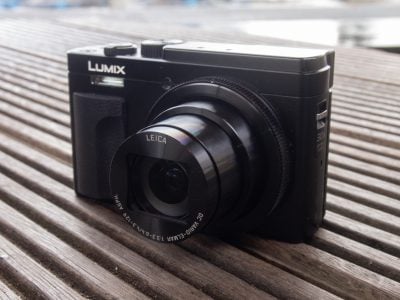Panasonic Lumix TZ95 ZS80 review
-
-
Written by Ken McMahon
Quality
To test real-life performance, I shot this scene with the Panasonic Lumix TZ95 / ZS80 and the Nikon COOLPIX A1000 using their best quality JPEG modes. Both cameras were mounted on a tripod and image stabilisation was disabled. For this first test both cameras were set to their 24mm equivalent maximum wide angle setting. Aperture Priority mode was selected for the exposure and both cameras were set to f4.
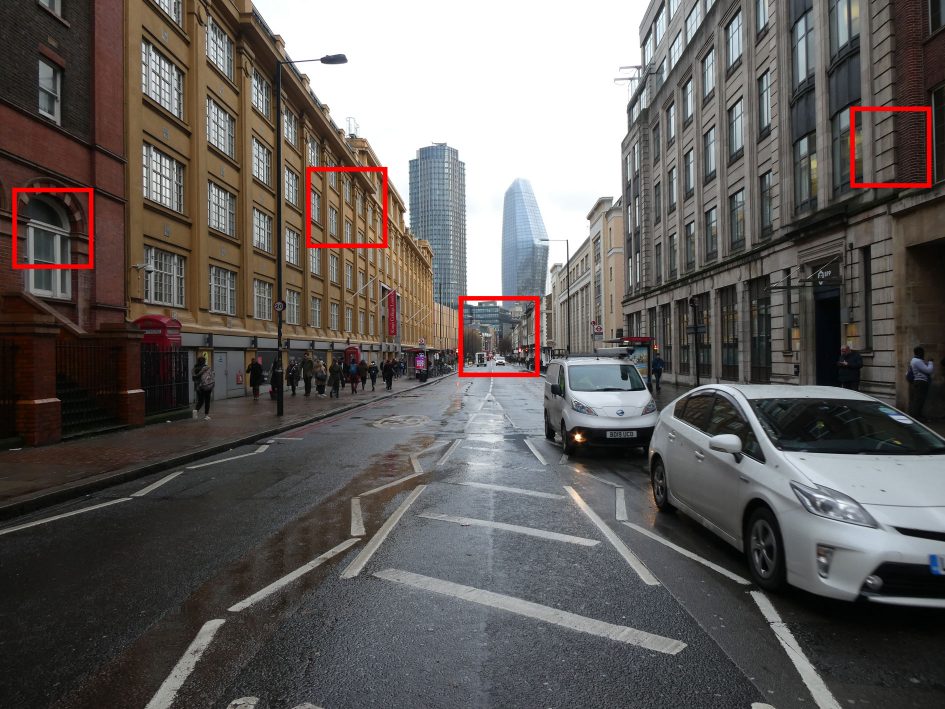
As usual the crops below are taken from the areas marked in red above.
The first thing to note is that the 20 Megapixel sensor in the Lumix TZ95 / ZS80 produces a smaller crop area with larger detail then those from the 16 Megapixel COOLPIX A1000. Casting an eye down the left hand column of crops one thing that clearly visible is the noise from the TZ95 / ZS80’s sensor. It’s probably most noticeable in crop two which has some areas of flat colour. You wouldn’t spot it at smaller sizes but it’s enough to take the edge of the finer detail. It’s also only fair to point out that the COOLPIX A1000 crops aren’t noise free either, but it’s not quite as noticeable.
Noise aside, I think the Lumix TZ95 / ZS80 gives a pretty good account of itself at the 24mm wide angle lens setting, but the COOLPX A1000 crops are a little more detailed and contrasty.
Now scroll down to see how these two super-zooms compare when zoomed in to a middling focal length.

Above left: Panasonic Lumix TZ95 / ZS80 at 4.3mm f4 80 ISO. Above right: Nikon COOLPIX A1000 at 4.3mm f4 100 ISO.

Above left: Panasonic Lumix TZ95 / ZS80 at 4.3mm f4 80 ISO. Above right: Nikon COOLPIX A1000 at 4.3mm f4 100 ISO.
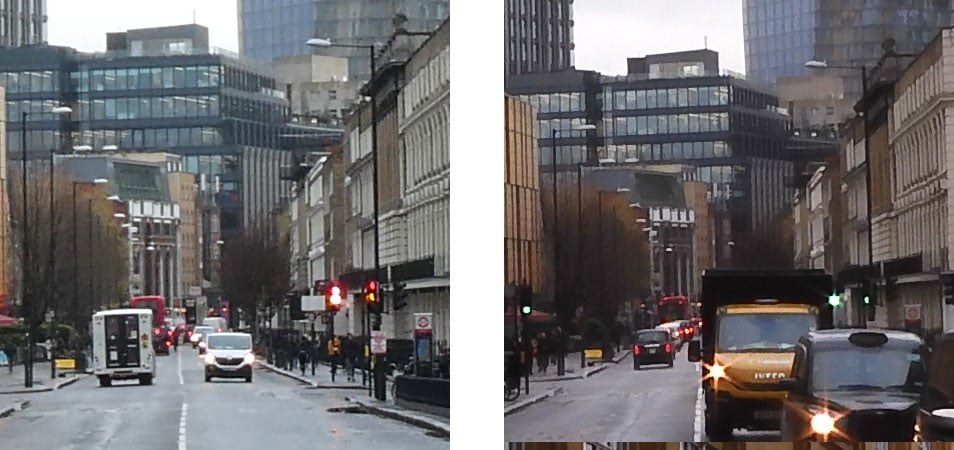
Above left: Panasonic Lumix TZ95 / ZS80 at 4.3mm f4 80 ISO. Above right: Nikon COOLPIX A1000 at 4.3mm f4 100 ISO.

Above left: Panasonic Lumix TZ95 / ZS80 at 4.3mm f4 80 ISO. Above right: Nikon COOLPIX A1000 at 4.3mm f4 100 ISO.
Panasonic Lumix TZ95 / ZS80 JPEG Quality at 98mm equivalent
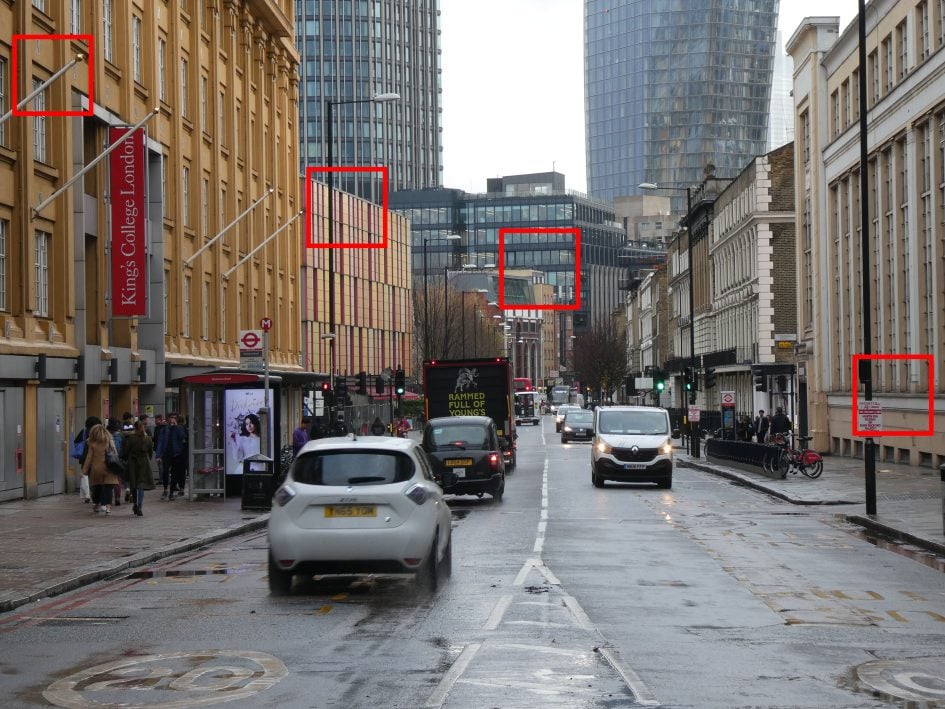
For this next set of crops I zoomed the Lumix TZ95 / ZS80 in to 98mm and set the COOLPIX A1000 to match the field of view. At this focal length I set the maximum aperture on both cameras which was f5. The story here is pretty much the same as with the first set of crops. Those from the Lumix are a little bit soft, with some visible noise texture, the COOLPIX crops look a bit more punchy with a tad more detail.
Now scroll down to see how things look at 300mm equivalent.
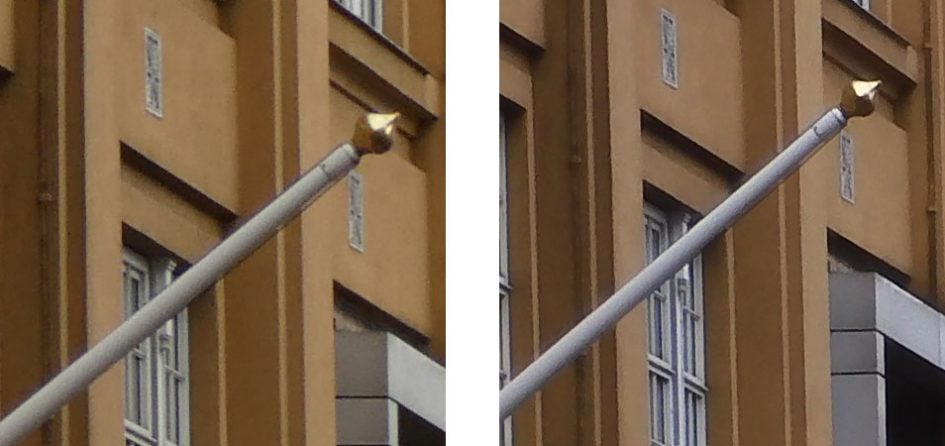
Above left: Panasonic Lumix TZ95 / ZS80 at 17.5mm f5 80 ISO. Above right: Nikon COOLPIX A1000 at 16.9mm f5 100 ISO.
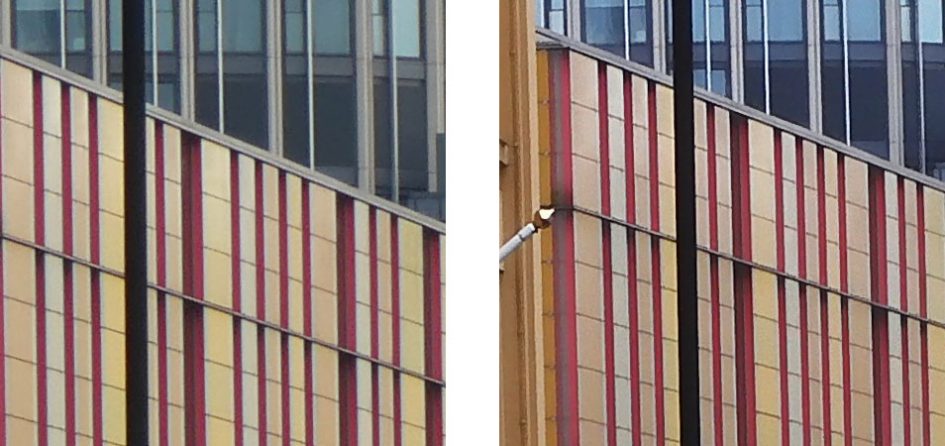
Above left: Panasonic Lumix TZ95 / ZS80 at 17.5mm f5 80 ISO. Above right: Nikon COOLPIX A1000 at 16.9mm f5 100 ISO.
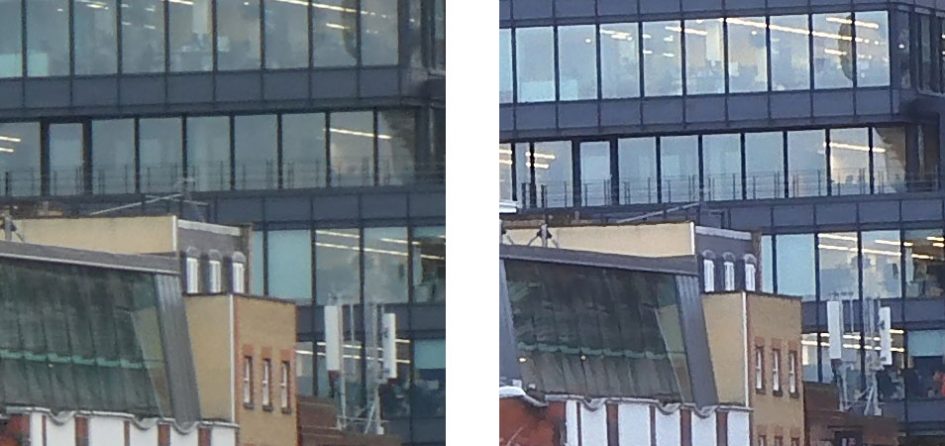
Above left: Panasonic Lumix TZ95 / ZS80 at 17.5mm f5 80 ISO. Above right: Nikon COOLPIX A1000 at 16.9mm f5 100 ISO.

Above left: Panasonic Lumix TZ95 / ZS80 at 17.5mm f5 80 ISO. Above right: Nikon COOLPIX A1000 at 16.9mm f5 100 ISO.
Panasonic Lumix TZ95/ZS80 JPEG Quality at 300mm equivalent
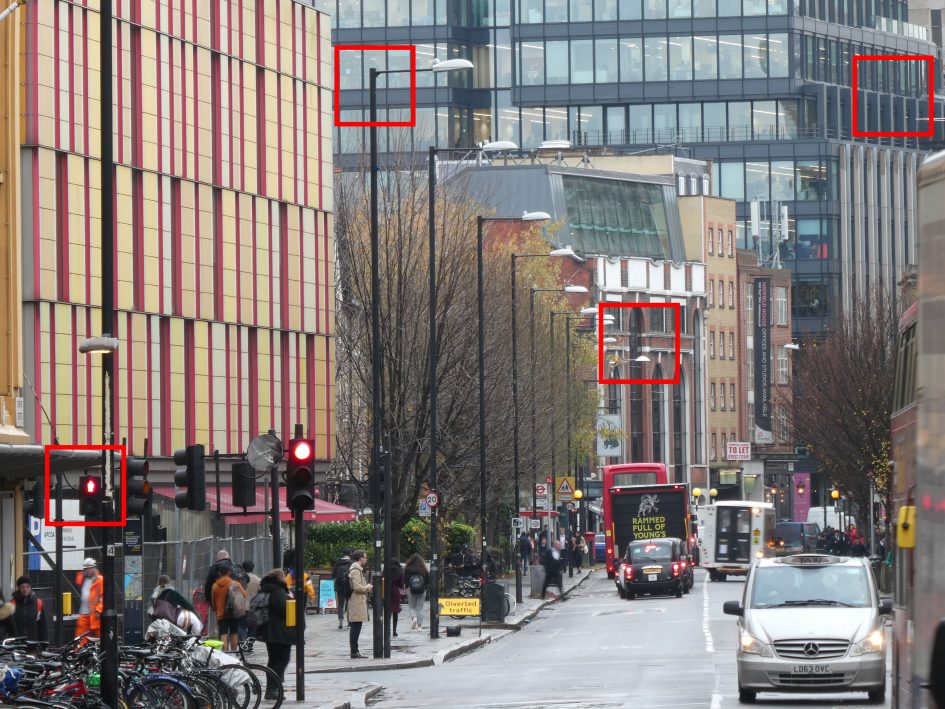
At 300mm we’re almost at the halfway spot of the Lumix TZ95 / ZS80’s zoom range. What’s notable at this point is how consistent these results are – both the Lumix TZ95 / ZS80 and the COOLPIX A1000 results are consistent across the frame and at the different focal lengths I tested. So both lenses are doing an excellent job, there’s no edge softness, distortion or chromatic aberration to speak of and any differences we can see are mostly due to the limitations of their respective sensors or the result of processing. At this point I don’t think there’s a great deal in it in terms of quality performance, though the Coolpix is a little less noisy and some might prefer its sharper, more contrasty output. Don’t forget that both these models shoot RAW, so there’s always the option to tweak to get a result that’s closer to your personal preference. Now scroll down to discover if the maximum zoom setting reveals any surprises.
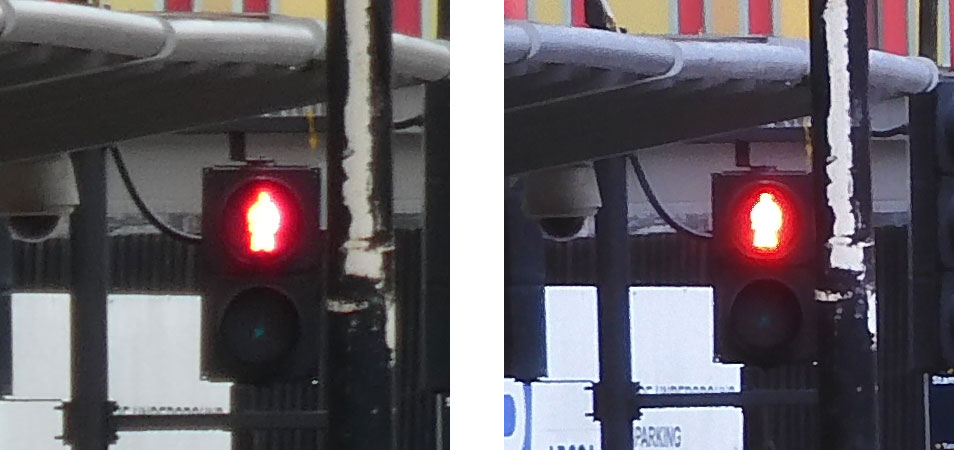
Above left: Panasonic Lumix TZ95 / ZS80 at 53.8mm f5.8 80 ISO. Above right: Nikon COOLPIX A1000 at 49.1mm f6.3 100 ISO.
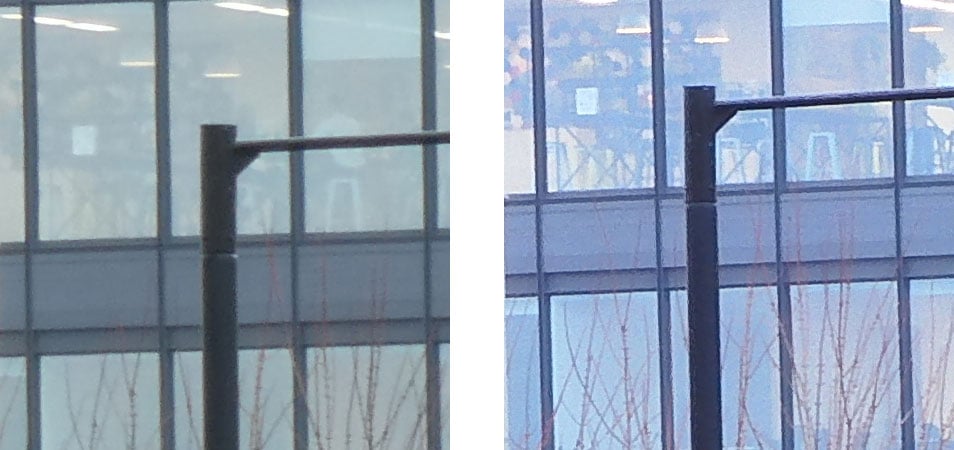
Above left: Panasonic Lumix TZ95 / ZS80 at 53.8mm f5.8 80 ISO. Above right: Nikon COOLPIX A1000 at 49.1mm f6.3 100 ISO.
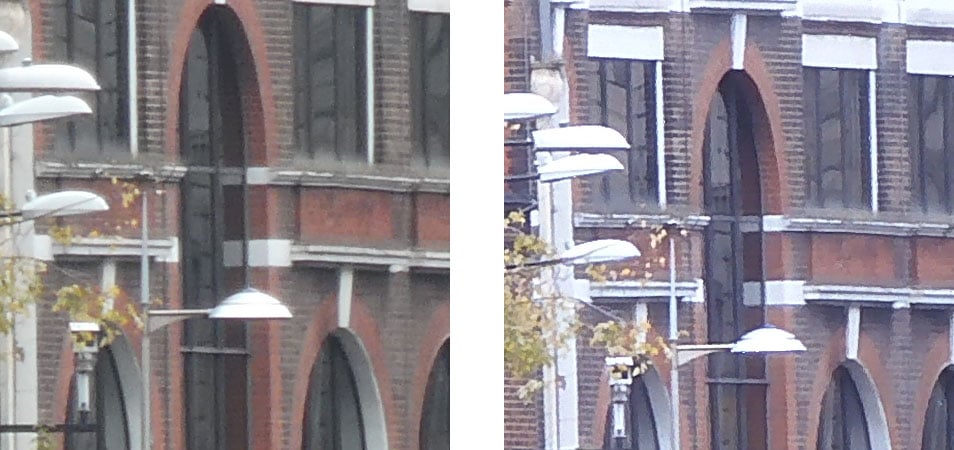
Above left: Panasonic Lumix TZ95 / ZS80 at 53.8mm f5.8 80 ISO. Above right: Nikon COOLPIX A1000 at 49.1mm f6.3 100 ISO.

Above left: Panasonic Lumix TZ95 / ZS80 at 53.8mm f5.8 80 ISO. Above right: Nikon COOLPIX A1000 at 49.1mm f6.3 100 ISO.
Panasonic Lumix TZ95 / ZS80 JPEG Quality at 720mm equivalent
For this final quality test I zoomed both cameras in to their maximum zoom focal length – 720mm on the Lumix TZ95 / ZS80 and 840mm on the COOLPIX A1000. I set the maximum available aperture – f6.4 on the Lumix TZ95 / ZS80 and f6.9 on the COOLPIX A1000. I’ve taken three crops here – one from the middle of the frame and two from the right edge. At the extreme end of the telephoto range we do see some variation in performance for both models. The Lumix TZ95 / ZS80 is producing some very soft results from the edge of the frame – particularly in the bottom right corner. And the COOLPIX A1000 suffers from quite visible purple fringing
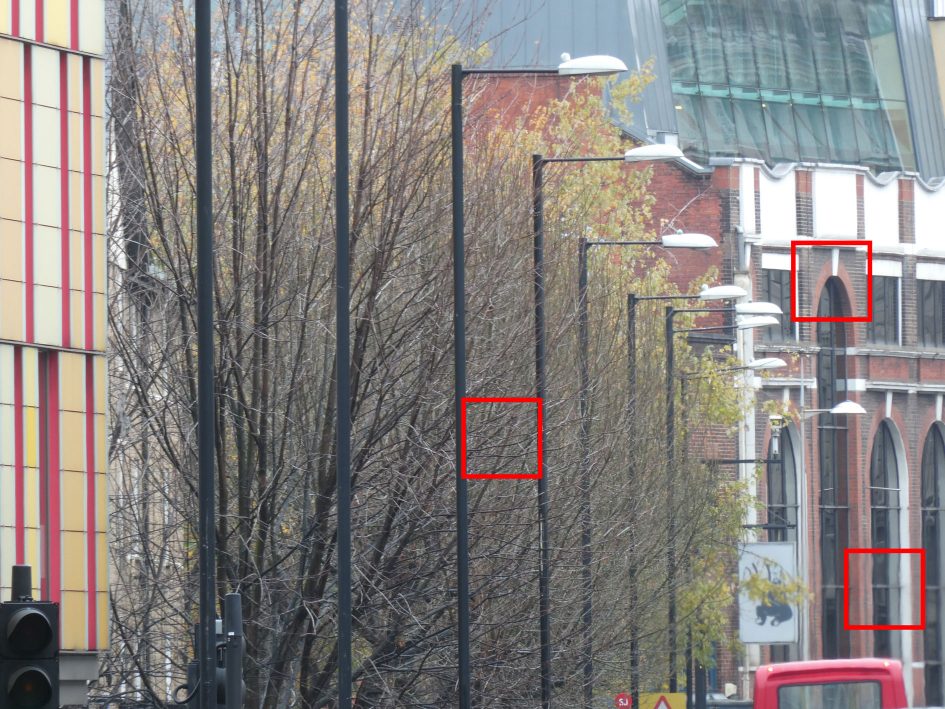
For this test I zoomed both models to their maximum telephoto setting – 720mm equivalent on the Lumix TZ95 / ZS80 and 840mm on the COOLPIX A1000. I set the maximum availalbe aperture on both cameras – f6.4 on the Lumix TZ95 / ZS80 and f6.9 on the COOLPIX A1000.

Above left: Panasonic Lumix TZ95 / ZS80 at 129mm f6.4 80 ISO. Above right: Nikon COOLPIX A1000 at 151mm f6.9 100 ISO.
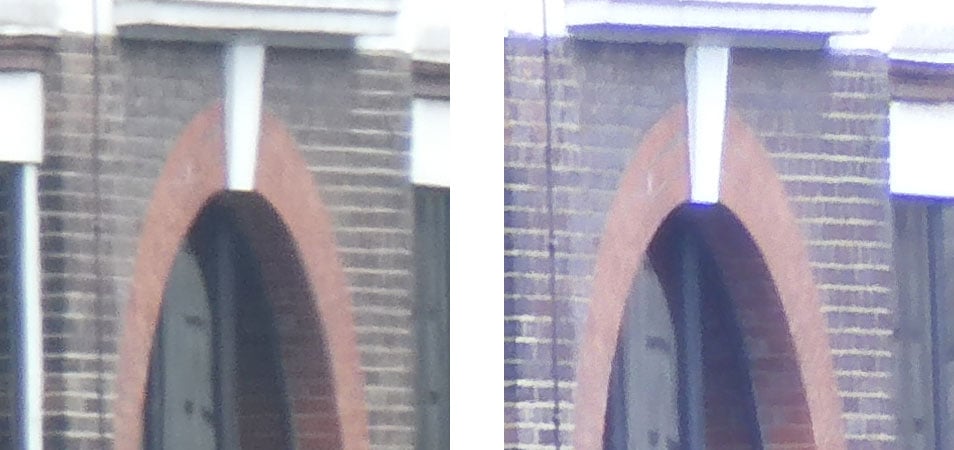
Above left: Panasonic Lumix TZ95 / ZS80 at 129mm f6.4 80 ISO. Above right: Nikon COOLPIX A1000 at 151mm f6.9 100 ISO.
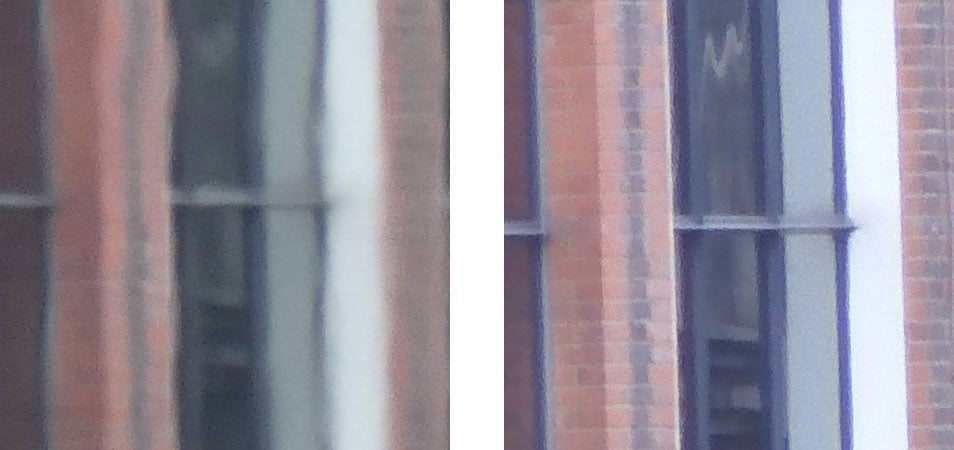
Above left: Panasonic Lumix TZ95 / ZS80 at 129mm f6.4 80 ISO. Above right: Nikon COOLPIX A1000 at 151mm f6.9 100 ISO.
Panasonic Lumix TZ95 / ZS80 JPEG Noise Quality
To examine noise levels under real-life conditions, I shot this scene with the Panasonic Lumix TZ95/SZ80 and the Nikon COOLPIX A1000 at each of their ISO sensitivities using their highest quality JPEG settings. Both cameras were mounted on a tripod and stabilisation was disabled.
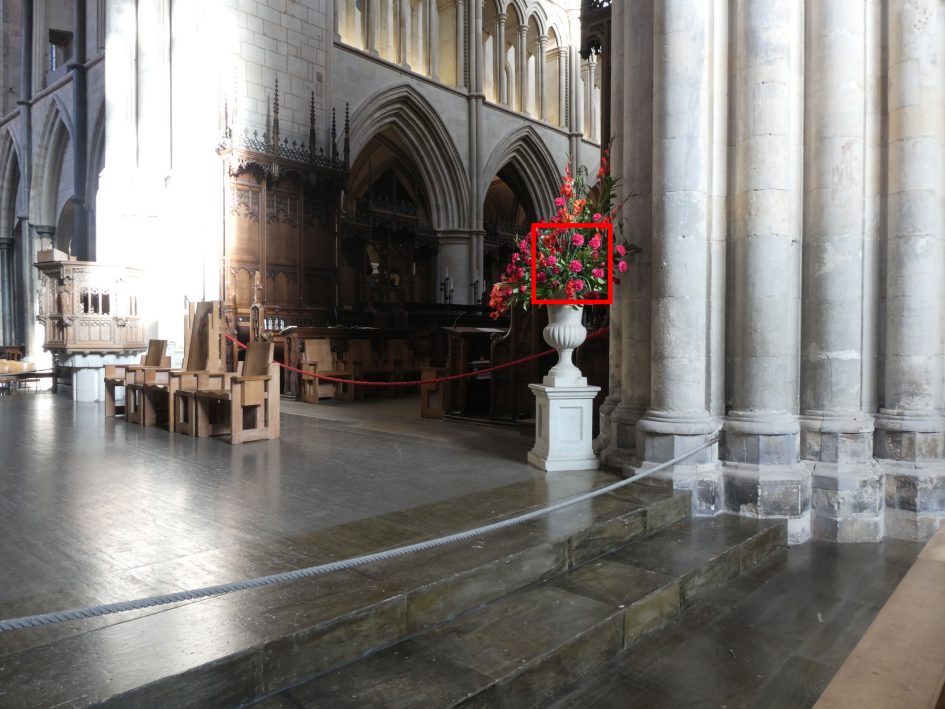
I set both cameras to their maximum 24mm equivalent wide angle focal length. Both cameras were set to f4 in Aperture Priority mode; the Lumix TZ95/ZS80 selected an exposure of 1/6 at its base 80 ISO sensitivity and the COOLPIX A1000 selected 1/5 at its base 100 ISO setting. As usual the crops below are from the areas marked in red above. As with the quality crops above, the 20 Megapixel sensor in the Lumix TZ95/ZS80 produces a smaller crop area with larger detail than the 16 Megapixel sensor in the COOLPIX A1000.
The first crop is from the Lumix TZ95 / ZS80 at its base 80 ISO setting and there’s no COOLPIX A1000 crop to compare it with as the A1000’s base sensitivity setting is 100 ISO, so let’s first compare the 80 ISO and 100 ISO crops from the TZ95/ZS80. I think the 80 ISO crop does look a little bit cleaner and more detailed, but there’s not a huge amount in it. There’s more of a difference between the two models; whether you’re comparing the 80 ISO or 100 ISO Lumix TZ95/ZS80 crop with the 100 ISO crop from the COOLPIX A1000 the latter looks sharper and more detailed. It’s not so much that’s there’s visible noise in the Lumix TZ95/ZS80 crops, but the detail looks a little soft and indistinct, possibly as a result of noise processing.
Moving on to the 200 ISO crops, image detail become a little less distinct in the Lumix TZ95 / ZS80 crop. And with each step up the sensitivity range the same thing happens. To be fair, the noise processing is doing a very good job here, you can’t actually see any noise, just the effects of its removal. I think most people would be happy with the noise performance of the Lumix TZ95 / ZS80, when viewing images at 100 percent like we are here, up to 800 ISO. Beyond that you’re definitely going to be aware of that softness and lack of detail in a full sized print.
You wouldn’t get as big a print from the 16 Megapixel COOLPIX A1000, but it would look cleaner, crisper and more detailed at an equivalent ISO sensitivity setting.

Above left: Panasonic Lumix TZ95/ZS80 at 80 ISO f4.

Above left: Panasonic Lumix TZ95/ZS80 at 100 ISO f4. Above right: Nikon COOLPIX A1000 at 100 ISO f4.

Above left: Panasonic Lumix TZ95/ZS80 at 200 ISO f4. Above right: Nikon COOLPIX A1000 at 200 ISO f4.

Above left: Panasonic Lumix TZ95/ZS80 at 400 ISO f4. Above right: Nikon COOLPIX A1000 at 400 ISO f4.

Above left: Panasonic Lumix TZ95/ZS80 at 800 ISO f4. Above right: Nikon COOLPIX A1000 at 800 ISO f4.

Above left: Panasonic Lumix TZ95/ZS80 at 1600 ISO f4. Above right: Nikon COOLPIX A1000 at 1600 ISO f4.

Above left: Panasonic Lumix TZ95/ZS80 at 3200 ISO f4. Above right: Nikon COOLPIX A1000 at 3200 ISO f4.

Above left: Panasonic Lumix TZ95/ZS80 at 6400 ISO f4. Above right: Nikon COOLPIX A1000 at 6400 ISO f4.
Check prices on the Lumix TZ95 / ZS80 at Amazon, B&H, Adorama, or Wex. Alternatively get yourself a copy of my In Camera book or treat me to a coffee! Thanks!




